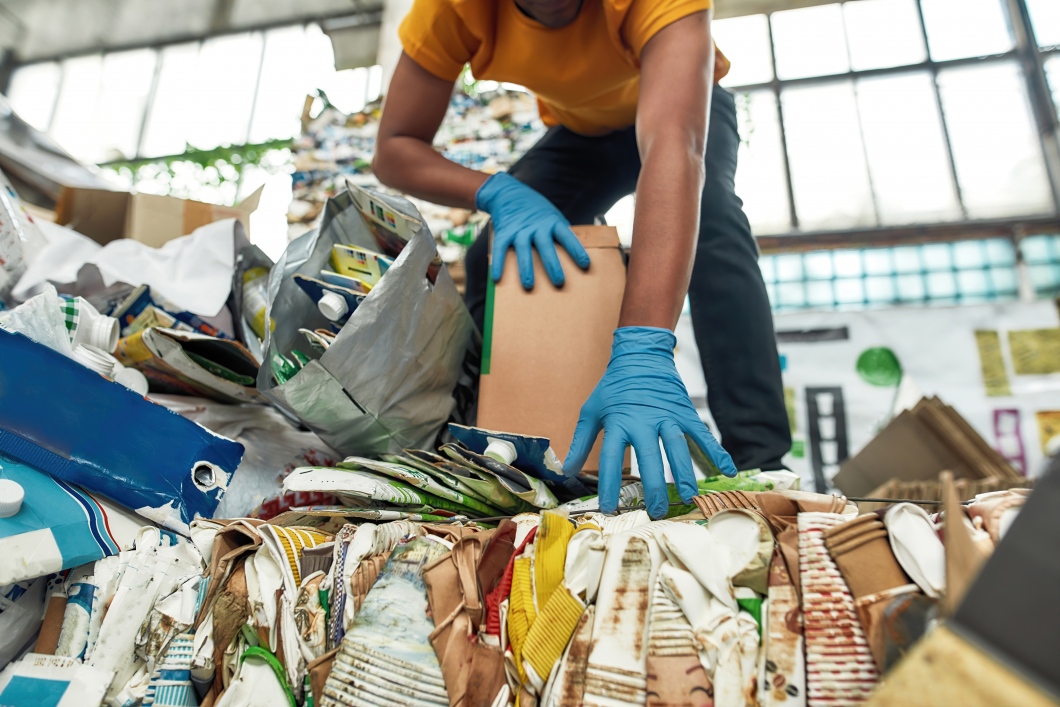Climate change is a global problem, and we all need to do our part in reducing our carbon footprint. One such way is to recycle cardboard, which not only helps reduce your carbon footprint but can also save you money. Let’s take a look at how cardboard recycling reduces your carbon footprint and what you can do to help.
The Environmental Impact of Cardboard Recycling
We all know that recycling paper products are good for the environment. But did you know that by recycling cardboard, you can also reduce your carbon emissions? Cardboard boxes are made from trees, which absorb carbon dioxide from the atmosphere as they grow. When these boxes are recycled, this process is reversed, and the stored carbon dioxide is released back into the atmosphere. By recycling cardboard items such as boxes, shipping materials, and packaging materials, we can help lower our carbon footprint significantly. Cardboard is one of the most commonly recycled materials in the world. It is made from paper pulp, which means that it can be easily broken down and reused for a variety of different purposes. It is estimated that about 75% of all waste cardboard can be recycled. That’s a lot!
Plus, recycling cardboard also reduces the number of trees harvested for these purposes each year. This means fewer trees being cut down, less energy used in production processes, and less landfill space used up with discarded materials. All of these contribute to reducing our environmental impact significantly! Recycling cardboard helps to reduce the number of trees that have to be cut down to make new cardboard boxes, as well as reducing the amount of water that has to be used in production. This reduces our reliance on natural resources and conserves energy since it takes much less energy to recycle cardboard than it does to create new boxes from scratch. Additionally, recycling also helps reduce air pollution since fewer factories are needed for production if there is a high demand for recycled material.
Recycling also helps keep hazardous materials out of landfills by diverting them away from disposal sites where they could potentially contaminate groundwater or seep into the soil. This can help protect local ecosystems from contamination and keep our environment safe and healthy.
How You Can Help Support Cardboard Recycling
There are several ways that individuals and businesses alike can help support cardboard recycling efforts and reduce their own environmental impact at the same time. For starters, it’s important to choose recyclable packaging whenever possible when ordering online or purchasing retail items. Opting for recyclable packaging materials will go a long way towards helping reduce your own carbon emissions while supporting businesses that are environmentally conscious as well. Additionally, many companies offer rewards programs where points are earned for recycled materials such as cardboard boxes or bottles—so be sure to take advantage of those programs whenever possible! Finally, make sure to properly dispose of any unwanted cardboard items in designated recycling bins or drop-off locations instead of throwing them away into regular trash cans or dumpsters—this will ensure that they get recycled instead of ending up in landfills where they would have no chance of being reused or repurposed in any way.
Most recycling facilities accept all types of cardboard, including cereal boxes, shoe boxes, and shipping boxes. However, there are a few types of cardboard that cannot be recycled. These include wax-coated cardboard and pizza boxes (because of the grease). If you’re not sure whether your cardboard can be recycled, check with your local recycling facility. Recycling specialists like Mid America Paper Recycling Co offer a great way to reduce your carbon footprint by helping you recycle your cardboard! By making sure you have a collection spot for all of your cardboard waste and then getting in touch with your local specialists to recycle it, you can rest easy knowing that you are doing your part in reducing your own personal carbon footprint.
The first step in recycling your cardboard is to break it down into smaller pieces. This will make it easier to transport and will save space in your recycling bin. You can either cut the cardboard into smaller pieces or fold it up so that it takes up less space. Once you have broken down the cardboard, you can place it in your recycling bin. Before putting your cardboard into the recycling bin, make sure it has been thoroughly cleaned. This means removing any tape, labels, or other residues that may have been left on the box when it was opened or used. Additionally, if there are any food remnants still on the box (such as grease or oils), they should be wiped away before throwing the box in the bin. This will help ensure that your recycling efforts are effective and won’t contaminate other materials being recycled.
Reducing our individual and collective carbon footprints should be a priority if we want to keep our planet healthy and safe for future generations. And one great way to do so is by making sure we recycle all unnecessary cardboard items, such as boxes and shipping materials, rather than just throwing them away into regular garbage cans or dumpsters. Not only does this make good sense from an environmental standpoint, but it can also save businesses money on their shipping costs due to reduced material expenses—so it’s truly a win-win situation for everyone involved! So make sure you do your part by choosing recyclable packaging whenever possible and disposing of any unwanted cardboard items in designated recycling bins so that they can be reused instead of ending up in landfills where they will never get recycled at all!

